Gulf Guardian Award Winners 2003
Civic/Nonprofit Organization - 2nd Place
AUDUBON OF FLORIDA WINS
2ND PLACE GULF GUARDIAN AWARD (PDF) (2 pp, 55K, about PDF)
Click on the small picture to view a larger size
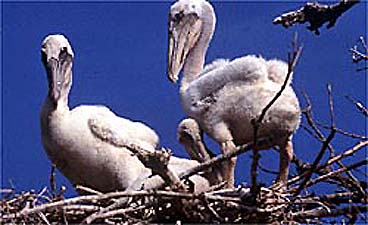
Brown Pelicans nest in trees in Florida. Colonies where pelicans nest
are posted to protect the nesting birds from disturbance
Top of page
| 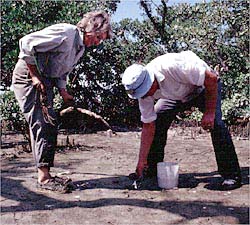
Erosion control on nesting islands is a priority. Here are volunteers
planting cordgrass, the cordgrass then grows in dense stands, trapping
mangrove seedlings, and reducing erosion. |
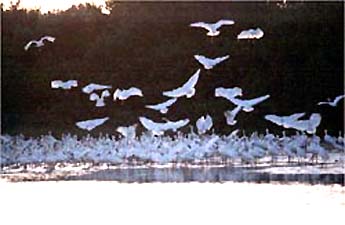
The Alafia Bank Bird Sanctuary in Tampa Bay is the keystone colony
of the Coastal Islands Sanctuaries. This last spring, over 16,000
pairs of White Ibis nested here. |
Top of page |
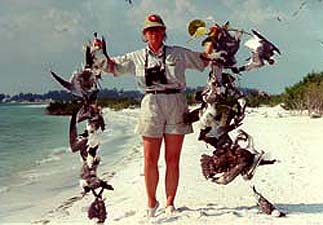
Monofilament fishing line poses a danger to birds, fish, turtles,
and other wildlife. Audubon organizes a fall fishing line cleanup
project to remove line from nesting islands. In the Tampa Bay area,
over 50 boat captains will visit nesting islands this October during
the non-nesting season to pick up fishing line and prepare the islands
as safer nesting habitats for birds next spring.
Top of page |
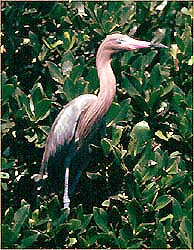
Reddish Egrets, North America's rarest heron, are slowly colonizing
new nesting islands in west central Florida. This species is listed
in Florida and Texas, and is a "Watchlist" species of
the American Bird Conservancy and the National Audubon Society".
This specis is still recovering from near eradication by the plume
hunting trade in the late 1880s. Biologists from the Sanctuaries
found 60 pairs nesting this year. |

Ground-nesting birds like the American Oystercatcher are particularly
vulnerable to disturbance by people and their pets. Their nests
are shallow scrapes in the sand, just above the high tide line.
The birds trust the excellent camouflage of the eggs to protect
them from predators. The Sanctuary staff posted islands where 70
pairs of oystercatchers nested last spring, 20% of Florida's oystercatcher
population. |
Top of page |
 |
Public outreach, signage, regular patrol, population monitoring,
habitat enhancement projects, and environmental education form a nucleus
of action by Audubon of Florida's Coastal Islands Sanctuaries to protect
50,000 pairs of vulnerable nesting birds on Florida's west central
coast. |
Top of page
You will need Adobe Reader to view some of the files on this page. See EPA's PDF page to learn more.





![[logo] US EPA](../gif/logo_epaseal.gif)






